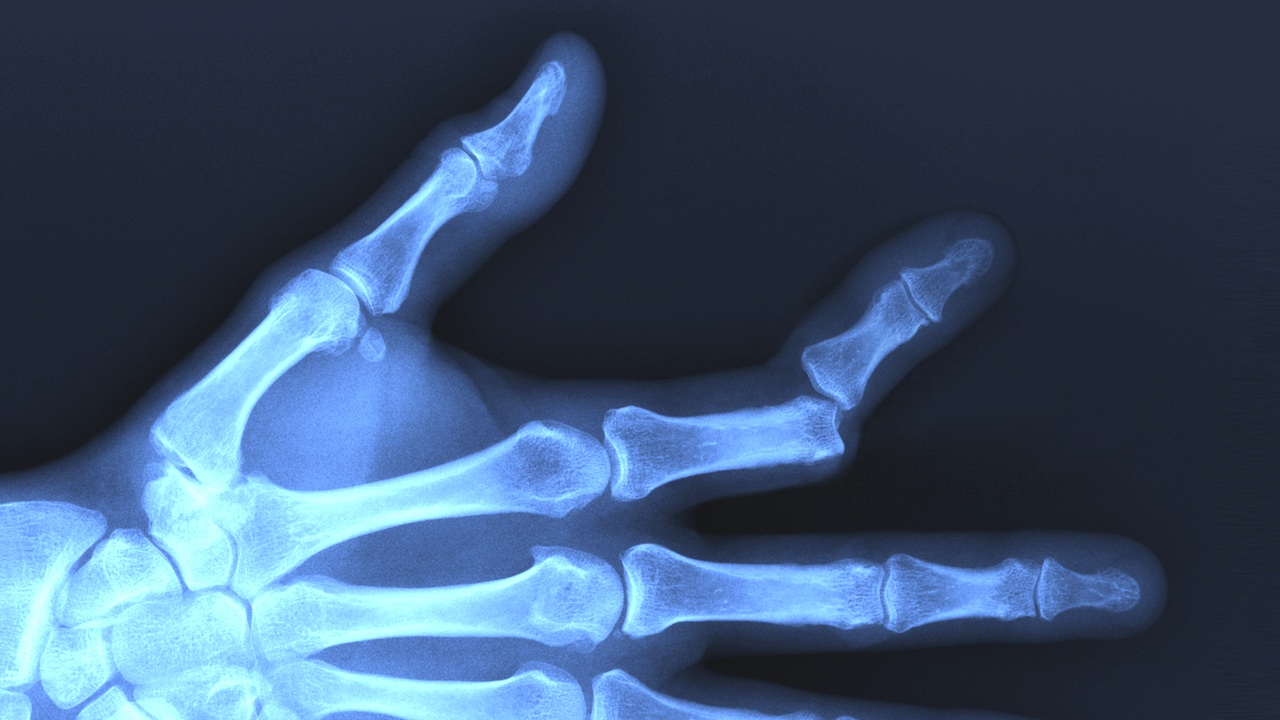Saffron is a highly prized spice that has been used for centuries in various cultures around the world. It is derived from the stigma and style of the Crocus sativus plant and is known for its distinct aroma, flavor, and vibrant color. Saffron has a long and fascinating history, with records of its use dating back to ancient times.
In addition to its culinary applications, saffron has also been used in traditional medicine for its purported health benefits. Modern research has shown that saffron contains a variety of compounds that may have antioxidant, anti-inflammatory, and mood-enhancing effects.
Despite its popularity and historical significance, saffron remains one of the world’s most expensive spices due to the labor-intensive process required to harvest and process the delicate threads. As such, saffron is often reserved for use in high-end dishes or as a luxury item.
In this article, we will delve deeper into the history and uses of saffron, explore its potential health benefits, and examine the challenges and opportunities associated with its cultivation and trade.
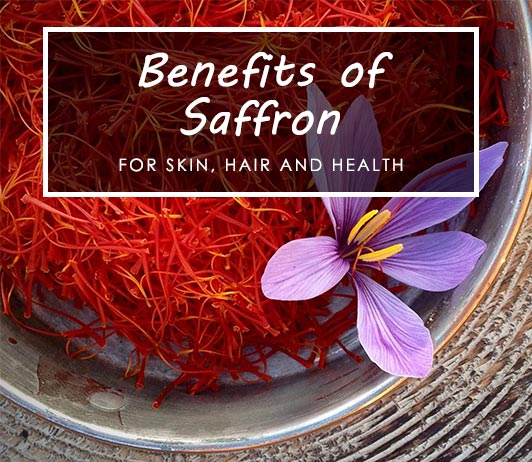
1.Introduction
1.1. Historical background of saffron
Saffron, a spice derived from the dried stigmas of the Crocus sativus flower, has been used for thousands of years in various cultures worldwide. Originating in the Mediterranean and Middle East, saffron was highly valued for its vibrant color, unique flavor, and potential medicinal properties. Ancient civilizations, including the Egyptians, Greeks, Romans, and Persians, utilized saffron for multiple purposes, such as culinary, medicinal, and even religious rituals. Over time, saffron cultivation spread to other regions, including Spain, India, and North Africa, further solidifying its importance in global trade and culture.
1.2. Saffron cultivation and harvesting
Saffron is a labor-intensive crop, requiring a significant amount of human effort to produce even a small amount of the spice. The Crocus sativus plant thrives in specific climates with well-drained soil and mild winters. Saffron is typically planted in the summer and harvested in the fall when the flowers bloom. Harvesting saffron is a delicate process, as each flower produces only three stigmas, which must be handpicked, usually during the early morning hours to avoid damage from sunlight.
After the stigmas are collected, they are carefully dried, resulting in the final saffron threads or powder. Given the intricate nature of the harvesting process, combined with the high demand and limited supply, saffron is one of the most expensive spices in the world. The labor-intensive nature of saffron cultivation also contributes to the growth of rural economies in producing regions, providing employment and income opportunities for local communities.
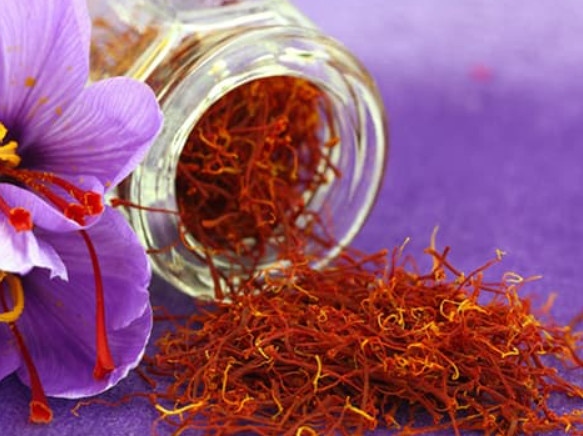
2.Chemical composition of saffron
Saffron is a complex spice, containing more than 150 volatile and aroma-yielding compounds, as well as several non-volatile compounds that contribute to its unique characteristics. The primary active constituents responsible for saffron’s color, taste, and aroma are crocin, safranal, and picrocrocin, respectively. This section will delve into these major compounds and briefly touch upon other minor compounds found in saffron.
2.1. Crocin and crocetin
Crocin is the primary carotenoid pigment found in saffron, responsible for its vibrant yellow-orange color. As a water-soluble glycoside, crocin is composed of two molecules of the aglycone crocetin linked to gentiobiose, a disaccharide. Crocetin, a lipophilic carotenoid, is the main component responsible for saffron’s antioxidant properties. Research has shown that crocin and crocetin exhibit potential therapeutic effects in various health conditions, including cancer, neurodegenerative diseases, and cardiovascular diseases.
2.2. Safranal
Safranal is the main volatile compound responsible for saffron’s distinct aroma. It is a monoterpenoid aldehyde that forms from the degradation of picrocrocin during the drying process. Safranal contributes not only to the fragrance of saffron but also to some of its pharmacological effects, including antioxidant, anti-inflammatory, and neuroprotective properties.
2.3. Picrocrocin
Picrocrocin is the primary glycoside responsible for saffron’s characteristic bitter taste. It is a precursor to safranal, which forms during the drying process. Picrocrocin also exhibits some pharmacological properties, such as antioxidant and anticonvulsant activities.
2.4. Other minor compounds
In addition to the major compounds, saffron contains numerous other minor constituents, including flavonoids, vitamins (B1, B2, B6, and C), minerals (potassium, calcium, magnesium, and iron), and various other volatile compounds. These components may also contribute to the overall health benefits and characteristics of saffron, although their individual effects are not as well-studied as the major compounds.
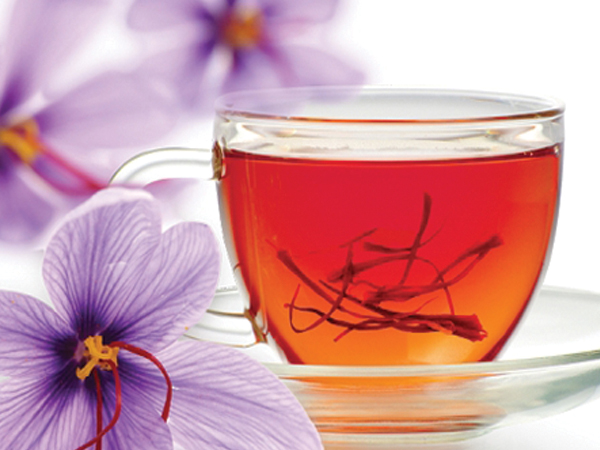
3.Pharmacological properties of saffron
Saffron has been widely studied for its potential pharmacological properties, which have been attributed to its rich chemical composition. In this section, we discuss the various health benefits and therapeutic effects of saffron, as demonstrated by scientific research.
3.1. Antioxidant properties
Saffron contains powerful antioxidant compounds, such as crocin, crocetin, and safranal, which help neutralize free radicals and reduce oxidative stress. These antioxidant effects may contribute to the prevention and treatment of various diseases, including cancer, cardiovascular disorders, and neurodegenerative diseases.
3.2. Anti-inflammatory effects
The active constituents in saffron have been shown to possess anti-inflammatory properties, which can help alleviate inflammation and pain in various conditions, such as arthritis, asthma, and inflammatory bowel diseases.
3.3. Anticancer properties
Several studies have demonstrated the potential anticancer effects of saffron and its active constituents, including inhibiting tumor growth, inducing apoptosis (cell death) in cancer cells, and preventing metastasis (cancer spread). These effects have been observed in various types of cancer, such as breast, lung, and colorectal cancer.
3.4. Antidepressant and anxiolytic effects
Saffron has been shown to exert antidepressant and anxiolytic (anti-anxiety) effects in both animal and human studies. These effects may be attributed to its active constituents, which can modulate the levels of neurotransmitters, such as serotonin and dopamine, in the brain.
3.5. Neuroprotective effects
Research suggests that saffron may have neuroprotective properties, helping to prevent or slow down the progression of neurodegenerative diseases, such as Alzheimer’s and Parkinson’s disease. The antioxidant and anti-inflammatory properties of saffron’s active constituents may contribute to these neuroprotective effects.
3.6. Cardioprotective effects
Saffron has demonstrated potential cardioprotective effects, such as reducing blood pressure, improving lipid profiles, and preventing atherosclerosis (plaque buildup in the arteries). These effects can help lower the risk of heart disease and stroke.
3.7. Anti-diabetic properties
Studies have shown that saffron may help regulate blood sugar levels and improve insulin sensitivity, making it a potential therapeutic agent for managing diabetes and its complications.
3.8. Aphrodisiac properties
Saffron has been traditionally used as an aphrodisiac, and some scientific evidence supports its potential to improve sexual function and libido in both men and women.
3.9. Effects on ocular health
Saffron and its active constituents have shown potential benefits for ocular health, such as reducing the risk of age-related macular degeneration (AMD) and improving retinal function.
3.10. Antimicrobial and antiviral properties
Saffron has exhibited antimicrobial and antiviral properties, making it potentially effective against various bacterial, fungal, and viral infections. These properties may be attributed to its active constituents, which can disrupt the growth and function of harmful microorganisms.
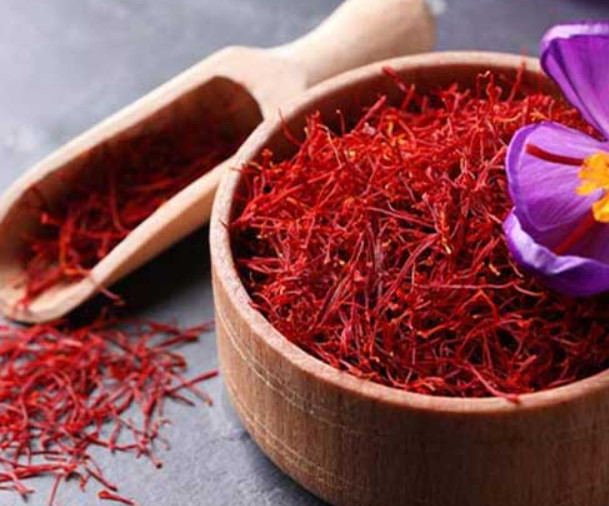
4. Traditional uses of saffron in alternative medicine
Saffron has been used in traditional medicine systems across various cultures for thousands of years. Its wide range of pharmacological properties has made it a popular ingredient in traditional remedies for numerous health conditions. In this section, we explore some of the traditional uses of saffron in different alternative medicine systems.
4.1. Ayurveda
In Ayurveda, the traditional Indian medicine system, saffron is considered a potent rejuvenating and balancing herb. It is used to treat various conditions, such as digestive disorders, respiratory issues, and mental health problems like depression and insomnia. Saffron is also used in Ayurveda as a tonic for the heart, liver, and reproductive system.
4.2. Traditional Chinese Medicine (TCM)
In Traditional Chinese Medicine, saffron is used to regulate the flow of Qi (energy) and blood circulation in the body. It is believed to have warming and calming properties, making it an effective remedy for conditions like menstrual disorders, depression, and anxiety. Saffron is also used in TCM to enhance the skin’s appearance and treat various skin conditions.
4.3. Persian traditional medicine
In Persian traditional medicine, saffron is highly valued for its numerous therapeutic properties. It has been used as a treatment for digestive disorders, liver diseases, respiratory problems, and various mental health issues. Saffron is also believed to have aphrodisiac properties, improving sexual function and fertility in both men and women.
4.4. Unani medicine
Unani medicine, a traditional medicine system practiced in South Asia and the Middle East, also utilizes saffron for its various health benefits. In Unani medicine, saffron is used as a general tonic, an aphrodisiac, and a remedy for conditions like heart disease, digestive problems, and neurological disorders. Additionally, saffron is used in Unani medicine to enhance skin health and treat skin conditions.
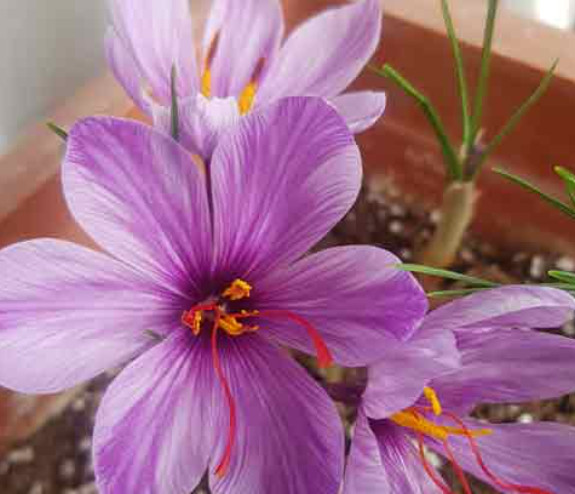
5. Culinary applications of saffron
Saffron is renowned for its unique flavor, vibrant color, and distinct aroma, making it a highly sought-after ingredient in various cuisines around the world. In this section, we explore the culinary uses of saffron and the health benefits it can provide when used in cooking.
5.1. Saffron in global cuisine
Saffron is used in a wide range of culinary dishes, from savory to sweet, across different cultures. Some notable examples include:
Spanish cuisine: Saffron is a key ingredient in traditional Spanish dishes, such as paella, a rice dish that combines various meats, seafood, and vegetables, and saffron-infused rice pudding.
Indian cuisine: Saffron is used in various Indian dishes, like biryani, a spiced rice dish with meat or vegetables, and kheer, a creamy rice pudding. It is also used to flavor and color various curries and desserts.
Persian cuisine: Saffron is an essential ingredient in Persian cuisine, used in dishes like saffron rice, tahdig (crispy rice), and various stews. It is also used in sweet treats, such as saffron ice cream and saffron-flavored halva.
Italian cuisine: Saffron is used in Italian dishes like risotto alla Milanese, a creamy rice dish flavored with saffron, and various pasta dishes.
French cuisine: Saffron is used in traditional French dishes like bouillabaisse, a fish stew, and various sauces.
5.2. Health benefits of saffron in cooking
Incorporating saffron into your cooking not only enhances the flavor, color, and aroma of your dishes but also provides various health benefits. The antioxidant, anti-inflammatory, and neuroprotective properties of saffron’s active compounds can contribute to overall wellness and disease prevention when consumed as part of a balanced diet. Additionally, saffron may aid digestion, improve mood, and help regulate blood sugar levels, making it a valuable ingredient in promoting a healthy lifestyle.
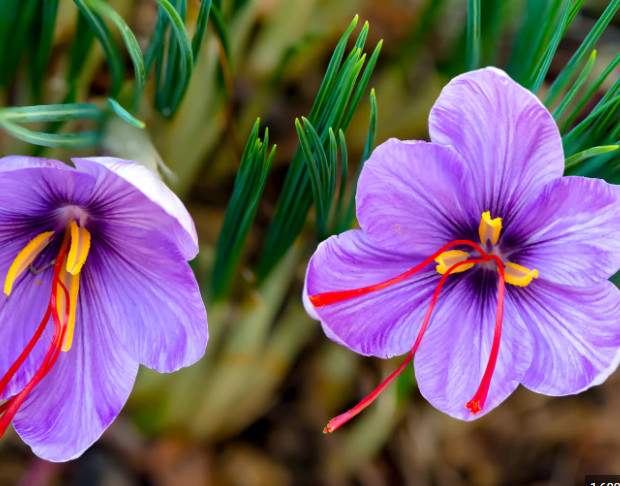
6. Saffron in cosmetics and personal care products
Due to its various health-promoting properties, saffron has found its way into the cosmetics and personal care industry. It is used as a natural ingredient in various skincare and hair care products, offering numerous benefits. In this section, we explore the use of saffron in cosmetics and personal care products and the advantages it provides.
6.1. Skin care benefits
Saffron is known for its antioxidant, anti-inflammatory, and antimicrobial properties, which can help improve skin health and appearance. Some of the potential skin care benefits of saffron include:
Enhancing skin brightness and complexion: The antioxidant properties of saffron can help protect the skin from environmental stressors, such as pollution and UV radiation, reducing dullness and promoting a healthy glow.
Reducing hyperpigmentation and dark spots: Saffron is believed to help inhibit the production of melanin, which can help reduce hyperpigmentation and even out skin tone.
Soothing irritation and inflammation: The anti-inflammatory properties of saffron can help reduce redness, swelling, and irritation associated with various skin conditions, such as acne and eczema.
Anti-aging effects: Saffron’s antioxidant properties can help fight free radicals and oxidative stress, which contribute to the aging process. This can help reduce the appearance of fine lines, wrinkles, and other signs of aging.
6.2. Hair care benefits
Saffron’s various properties also make it a valuable ingredient in hair care products. Some of the potential hair care benefits of saffron include:
Promoting hair growth: Saffron is believed to stimulate blood circulation in the scalp, promoting hair growth and reducing hair loss.
Strengthening hair: The antioxidant and anti-inflammatory properties of saffron can help protect hair from damage and breakage, resulting in stronger, healthier hair.
Enhancing hair color and shine: Saffron can add a natural golden hue to the hair, enhancing its color and shine.
Reducing scalp inflammation and dandruff: The anti-inflammatory and antimicrobial properties of saffron can help soothe scalp irritation and reduce dandruff.
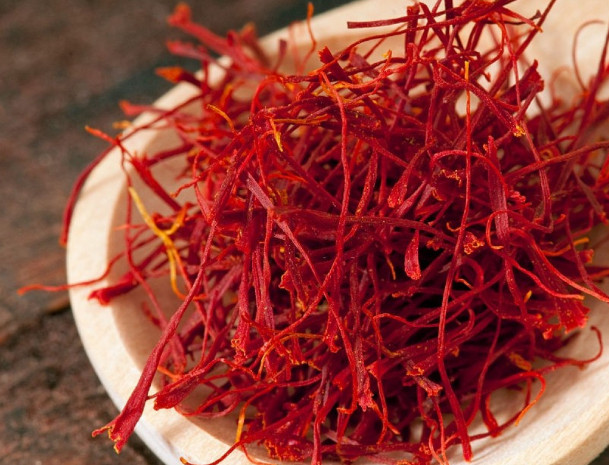
7. Precautions and potential side effects of saffron
While saffron is generally considered safe when consumed in moderation, it is important to be aware of the potential risks and side effects associated with its use. In this section, we discuss the precautions one should take and the possible side effects that may occur with saffron consumption or use.
7.1. Allergic reactions
Some individuals may experience an allergic reaction to saffron, resulting in symptoms like itching, redness, swelling, or difficulty breathing. If you suspect you may be allergic to saffron, it is essential to perform a patch test before using it on your skin or ingesting it.
7.2. Toxicity
Saffron is safe when consumed in small amounts (usually less than 1.5 grams per day). However, consuming excessive amounts of saffron can lead to saffron poisoning, which may cause symptoms such as vomiting, diarrhea, dizziness, and even more severe complications in extreme cases. It is crucial to use saffron in moderation and follow the recommended dosages.
7.3. Drug interactions
Saffron may interact with certain medications, including blood thinners, antihypertensive drugs, and antidepressants. If you are taking any medications, it is important to consult your healthcare provider before using saffron to avoid potential adverse effects or interactions.
7.4. Pregnancy and breastfeeding
Saffron is not recommended for pregnant women, as high doses may cause uterine contractions, which could potentially lead to miscarriage or premature labor. The safety of saffron during breastfeeding is not well-established, so it is advised to consult a healthcare professional before using saffron if you are nursing.
7.5. Adulteration
Saffron is one of the most expensive spices in the world, making it prone to adulteration. Some sellers may mix saffron with cheaper substances, such as turmeric, safflower, or marigold petals, to increase profit margins. Adulterated saffron may not provide the same health benefits and could potentially cause adverse effects. It is important to purchase saffron from reputable sources to ensure its quality and authenticity.

